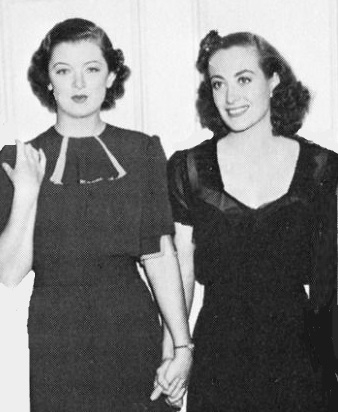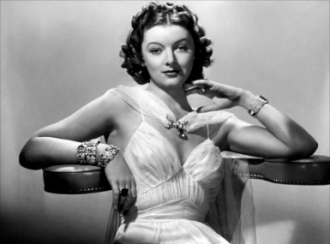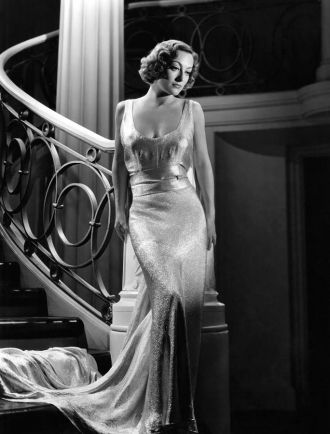Joan Crawford
Myrna Loy and Joan Crawford.
[In 1981, on her friend Joan Crawford] Joan and I approached being movie stars in a different way. She liked to take limos everywhere; she was much "grander", for lack of a better word, and maybe I was much more down to earth, but so what? Joan certainly wasn't the only movie star who liked the champagne and limousine treatment. I can tell you that when you made a friend in Joan you had a friend for life. She never forgot your birthday, and you'd get a congratulatory note from her when good things happened in your life. She cared about people and her friends, no matter what anybody says. I liked her, and I miss her, and I think her daughter's stories are pure bunk. Even if they were true, if ever there was a girl who needed a good whack it was spoiled, horrible Christina [Christina Crawford]. Believe me, there were many times I wanted to smack her myself.
[on working with Joan Crawford's adopted daughter Christina Crawford in a Chicago production of "Barefoot in the Park"] We didn't have any problems in "Barefoot" until Christina Crawford appeared. I've never known anybody else like her--ever. Her stubbornness was really unbelievable. She would not do a single thing that anybody told her to do. You'd go out there on the stage and you couldn't find her. One thing an actor needs to know is exactly where people are on the stage. Christina completely disregarded her blocking, throwing the rest of us off.
[on Christina Crawford when things got so bad with the Chicago production of "Barefoot in the Park" that Loy had to call the director of the London production to intervene] He couldn't do anything with her. Absolutely nothing. She was going to do it her way. It was self-defeating and sad, because the girl had potential.
[on Christina Crawford and her book "Mommie Dearest"] She wanted to be Joan Crawford. I think that's the basis of the book she wrote afterward and everything else. I saw what her mind created, the fantasy world she lived in. She envied her mother, grew to hate her, and wanted to destroy her.
[In 1981, on her friend Joan Crawford] Joan and I approached being movie stars in a different way. She liked to take limos everywhere; she was much "grander", for lack of a better word, and maybe I was much more down to earth, but so what? Joan certainly wasn't the only movie star who liked the champagne and limousine treatment. I can tell you that when you made a friend in Joan you had a friend for life. She never forgot your birthday, and you'd get a congratulatory note from her when good things happened in your life. She cared about people and her friends, no matter what anybody says. I liked her, and I miss her, and I think her daughter's stories are pure bunk. Even if they were true, if ever there was a girl who needed a good whack it was spoiled, horrible Christina [Christina Crawford]. Believe me, there were many times I wanted to smack her myself.
[on working with Joan Crawford's adopted daughter Christina Crawford in a Chicago production of "Barefoot in the Park"] We didn't have any problems in "Barefoot" until Christina Crawford appeared. I've never known anybody else like her--ever. Her stubbornness was really unbelievable. She would not do a single thing that anybody told her to do. You'd go out there on the stage and you couldn't find her. One thing an actor needs to know is exactly where people are on the stage. Christina completely disregarded her blocking, throwing the rest of us off.
[on Christina Crawford when things got so bad with the Chicago production of "Barefoot in the Park" that Loy had to call the director of the London production to intervene] He couldn't do anything with her. Absolutely nothing. She was going to do it her way. It was self-defeating and sad, because the girl had potential.
[on Christina Crawford and her book "Mommie Dearest"] She wanted to be Joan Crawford. I think that's the basis of the book she wrote afterward and everything else. I saw what her mind created, the fantasy world she lived in. She envied her mother, grew to hate her, and wanted to destroy her.
Date & Place:
Not specified or unknown.


 Amanda S. Stevenson
Amanda S. Stevenson 



